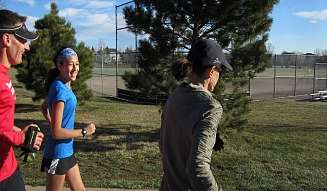Romantik Blog
Slow Jogging
Don't go too fast! This is not about speed, but the opposite: the slower, the better! The feel-good mixture of walking and running was developed in Japan by sports physiologist Prof. Dr. Hiroaki Tanaka. He is revered as a running guru in his home country, used to train the Japanese emperor and empress and caused a slow jogging boom among his compatriots! A trend that is now gaining more and more followers here in Japan!
What is so special about slow jogging?
It's basically about three important areas: Speed, technique and feeling good. On the right individual pace, expert Tanaka said: "By no means get out of breath. If you can't talk easy, you're running too fast." The technique in this type of running is much gentler on the joints than conventional jogging.
What technique is used for running?
The most visible difference to the usual jogging is, of course, the moderate pace. But even more decisive is the different running technique. In slow jogging, the feet do not touch the ground first with the heel, but the slow runner touches down with the middle foot and takes many small steps - 180 per minute is ideal! To ensure that no one gets confused when counting, it is advisable to use a running app, a fitness wristband or a pedometer. According to sports physicians, landing with the midfoot should put significantly less stress on knee joints, hips and spine. And what should your posture be like when running? Professor Tanaka: "Keep your back straight, your shoulders loose, let your arms swing naturally. The best thing is to enjoy running with a smile."
What is trained?
Slow jogging especially trains the gluteal muscles and the muscles of the thighs. It promotes endurance and helps with weight loss. According to research by expert Tanaka, twice as many calories are burned as with walking and a comparable number as with faster jogging. Even if it looks easy and simple, beginners should take slow jogging slowly, because the unfamiliar running style puts strain on the Achilles tendons and calves. To get used to it, sports physicians advise jogging for one minute and then walking for 30 seconds in alternation for one week. The goal after this phase is to run at least 30 minutes with the new technique two to three times a week.
Does slow jogging make you happy?
For the growing number of fans, no question - yes! Why? Because the relaxed running style allows you to enjoy nature in a much more sustainable way, because you can get fit without extreme exertion, run in a group without stress and talk while doing so. And because there is the magic 30th minute. Because if you hold out for half an hour, you will be richly rewarded on the spot. Then the body releases the so-called anandamide. A substance produced by the body itself that ensures good mood, feelings of happiness and mental serenity. A state of heavenly harmony that encourages you to add a few more minutes of slow running and smile mildly at the joggers who rush by.

Sports medicine: Ideal for beginners
Doing sport and protecting your joints at the same time - if you want to do that, slow jogging is basically the way to go. Berlin sports physician Dr Thorsten Dolla: "It is particularly suitable as an introduction for those who have not done much sport in the past or have taken a break from running." The good thing about slow running: You don't need any special equipment. However, in order to get the best possible contact with the midfoot, the running shoes should be as flat as possible, i.e. they should not have a thickly padded heel.
Post your comment
Comments
No one has commented on this page yet.
RSS feed for comments on this page RSS feed for all comments



